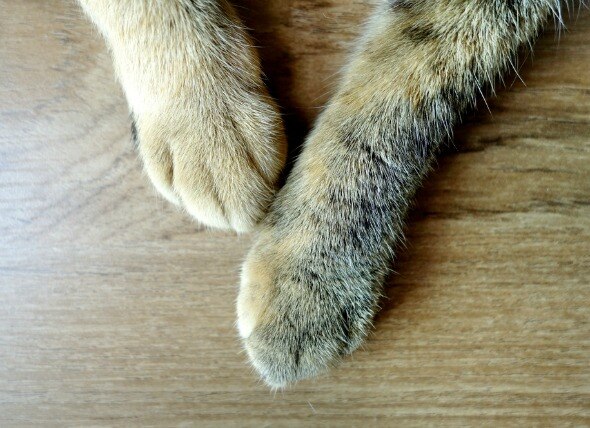what causes pillow foot in cats
What is known is that its related to the immune system. Friday January 7 2022.
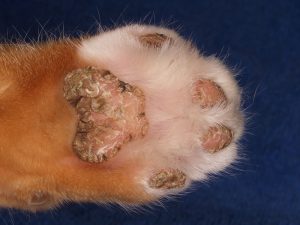
Pododermatitis A Common Problem With Many Causes
Due to the accumulation of a specific type of white blood cells called plasma cells the footpad becomes inflamed.

. The presence of a predisposition has been reported in cats that are positive for feline immunodeficiency virus FIV. In turn these excess plasma cells cause swelling in the padding on the bottom of the cats foot. Pillow paw is often a sign that something else is wrong.
The origin of the disease is not completely clear but it is believed to be immunity-mediated. Pillow paw is also an indicator of more serious conditions like feline. The sting of a bee will cause your cats paw to swell and should only be temporary.
Excess plasma cells -- cells produced by the body in response to an antibody or infection -- flood the padding on the bottom of the paw causing it to soften swell and become inflamed. The foot pad disease of cats called PILLOW FOOT is a classical disease that is poorly understood. For example tooth decay in cats can sometimes cause pillow paw because the infected teeth can trigger.
According to some experts your cat may be able to pass hairballs if you ingest a small amount of Vaseline. This condition can affect multiple paw pads leaving them with a spongy swelling look which can lead to ulceration with bacterial. No particular breed is predisposed nor is there any particular age or sex predilection.
Signs of pillow foot may manifest along with signs related to mouth sores or kidney problems. Signs to watch for include. Ulcerations on the foot pad.
What causes plasma cell pododermatitis in cats. Plasma cells play a major role in the immune system. Other possible causes include food or environmental allergies and bacterial and viral infections.
Causes of Pillow Foot in cats The cause is unknown but is thought. Causes of Pododermatitis in Cats Immune disorders Reaction to certain litter materials Feline Immunodeficiency virus over 50 percent of cats with pillow foot are FIV positive Feline leukemia virus FeLV Calicivirus Feline infectious peritonitis FIP. The cause of FPP remains unknown although the fact that immune cells are involved suggests some sort of overstimulation of the immune system.
Symptoms of Pododermatitis in Cats. Plasma cell pododermatitis commonly referred to by the names Pillow Foot or Pillow Paw is a disease of the footpads that can occur in some cats. Feline plasma cell pododermatitis is a rare disease with a characteristic symptom of swollen feet.
Cystotomy for Bladder Stones in Dogs and Cats. In very mild cases the cat may not be experiencing any discomfort. The medical term pododermatitis literally means inflammation of the skin on the foot.
Pillow Foot or Pillow Paw Feline Plasma Cell Pododermatitis is an autoimmune condition that can cause cats to develop painful swollen cracked paw pads on one or more of their paws. A mushy swollen foot pad. It causes swelling softness ulceration and discharge from the paws.
Research has yet to discover its exact cause. Pododermatitis or pillow foot is a condition in which pets will experience inflammation of the foot pads. It is for this reason it has the common name of pillow paw or pillow foot.
FPP usually involves more than one foot. This means the well-being of the cat and the efficacy of their. What are the symptoms of pillow foot in cats.
Pillow Foot Support for Pets. Clinical signs can vary from cat to cat. Pillow Foot in Cats Plasma Cell Pododermatitis in Cats is a rare disease of the footpads of cats.
The exact cause is unknown but like other autoimmune conditions it is the bodys response to an antibody or infection that causes an inflammatory response. The underlying cause is unknown but pillow foot is thought to be a form of autoimmune disease. Plasma cell pododermatitis commonly referred to by the names Pillow Foot or Pillow Paw is a disease of the footpads that can occur in some cats.
What is pillow paw. Bruising or purplish coloring on the foot pad. For example tooth decay in cats can sometimes cause pillow paw because the infected teeth can trigger the immune systems response.
Cuterebriasis is a Parasite Causing Skin Infections in Dogs and Cats. There is no known cause for feline plasma cell Pododermatitis. Pillow paw is a somewhat rare mysterious ailment.
It is known for its surprising appearance of spongy doughy and large footpads.

Pillow Foot In Cats Treatment Home Remedies

Feline Plasma Cell Pododermatitis Clinician S Brief

Feline Plasma Cell Pododermatitis Clinician S Brief
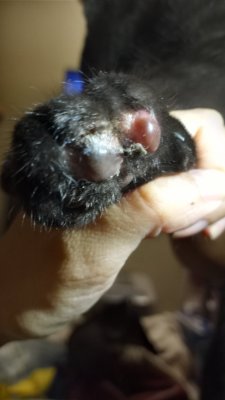
Pillow Paw Caused By Fresh Step Litter Thecatsite
.jpeg)
Pillow Foot In Cats Treatment Home Remedies

Pillow Foot In Cats Plasma Cell Pododermatitis Kingsdale Animal Hospital
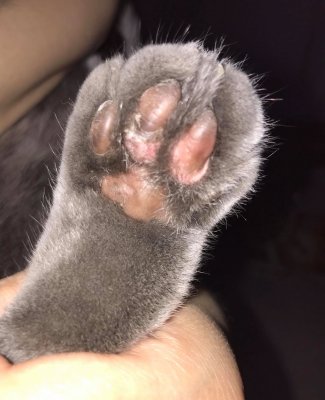
Pillow Foot Doesn T Go Away Thecatsite

Pillow Foot In Cats Plasma Cell Pododermatitis Kingsdale Animal Hospital

Plasma Cell Pododermatitis In Lacey Wa Dermatology Clinic For Animals

Plasma Cell Pododermatitis In Lacey Wa Dermatology Clinic For Animals

Plasma Cell Pododermatitis In Lacey Wa Dermatology Clinic For Animals

Plasma Cell Pododermatitis Case I Love Veterinary

Pillow Foot In Cats Plasma Cell Pododermatitis Kingsdale Animal Hospital
Help 2yo M Diagnosed With Pillow Foot Details In Comments R Bengalcats
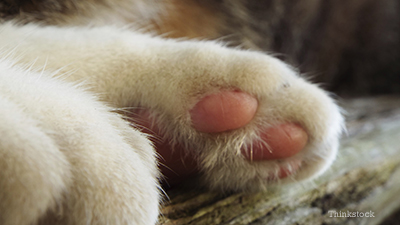
Feline Plasma Cell Pododermatitis My Cat Has A Sore Paw

Plasma Cell Pododermatitis In Cats Pillow Paw Causes Symptoms And Treatment
